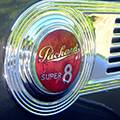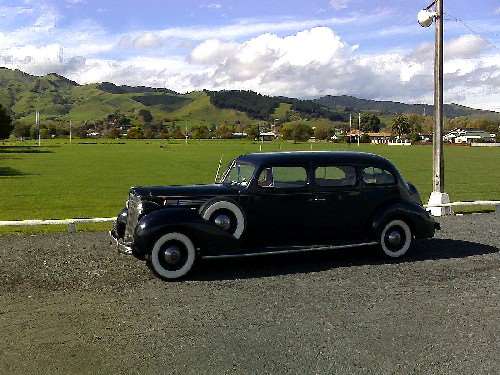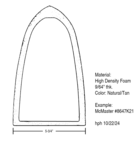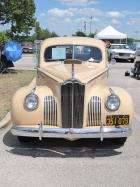|
Re: 120 advise
|
||||
|---|---|---|---|---|
|
Home away from home

|
You've come to the right place for a definitive answer. Probably your thermostat (easy to replace) or the engine waterways are clogged up. But someone here can help you for sure.
Posted on: 2016/8/12 15:18
|
|||
|
||||
|
Re: 120 advise
|
||||
|---|---|---|---|---|
|
Forum Ambassador
|
One question would be the coolant level when cold. Typically most Packard radiators are filled to a level approximately 1 inch below the bottom of the neck to allow room for expansion. Those that are overfilled are prone to spewing out the excess.
Posted on: 2016/8/12 15:36
|
|||
|
Howard
|
||||
|
||||
|
Re: 120 advise
|
||||
|---|---|---|---|---|
|
Not too shy to talk
|
Your temperatures sound normal for my 1938 120 (1602) with the optional warmer thermostat (used to improve fuel efficiency/mpg). However, some thermostats have no vent hole to reduce minor boil over or burping of gases, air or localized steam on stopping.
So a solution is to drill a ~1/8" dia hole in the thermostat flange. This I have done with success. Of course if I overfill the radiator it burps!
Posted on: 2016/8/14 19:39
|
|||
|
||||
|
Re: 120 advise
|
||||
|---|---|---|---|---|
|
Home away from home
|
Thanks guy, you are the best. Have ordered a new thermostat, will see that the vent hole is in it. Also will blow out the block and radiator while it is apart.
Thanks again, I will let you know how it works out Will
Posted on: 2016/8/15 12:03
|
|||
|
||||
|
Re: 120 advise
|
||||
|---|---|---|---|---|
|
Home away from home
|
wjames - The vent hole serves two purposes. First, it allows some small amount of coolant to circulate with the thermostat closed; and second, helps to prevent an air lock in the system when refilling it.
The 1937 115C and the 120C Packards are similar and have unpressurized cooling systems. I have a 160F rated thermostat in my 1937 Six (115C). I would not recommend going to a higher temperature one. My Six's temp gauge registers about mid-gauge (180) regardless of ambient temp. It will move a little higher (195) if stuck in traffic, but quickly goes down once the car is moving again. It has never boiled over on me. Also, since I do not have to worry about extreme low temps here in Austin I only run about a 25% mixture of antifreeze. This is enough to protect it down to about 0F and provide anti-rust protection. The less antifreeze used the more efficiently the cooling system will work. In New Jersey you probably need to use the max recommended mixture of 50-50 for freezing protection down to-34F. (o[]o)
Posted on: 2016/8/15 16:39
|
|||
|
We move toward
And make happen What occupies our mind... (W. Scherer) |
||||
|
||||
|
Re: 120 advise
|
||||
|---|---|---|---|---|
|
Home away from home

|
The problem is not the thermostat, if the thermostat were bad it would overheat while running. If it "boils over" when shut off then some part of the engine is above 212 degrees. This is usually caused by sediment/rust in the back of the block or a corroded water distribution tube.
Try removing the rear most core plug above the starter and see if there is rust/scale in there. Keep in mind the water jacket goes down an inch or so below the plug. If there is junk in there, remove all plugs, fish around with a coathanger and blast it with a pressure washer. Let us know what you find
Posted on: 2016/8/15 17:15
|
|||
|
||||

 (274.00 KB)
(274.00 KB)






